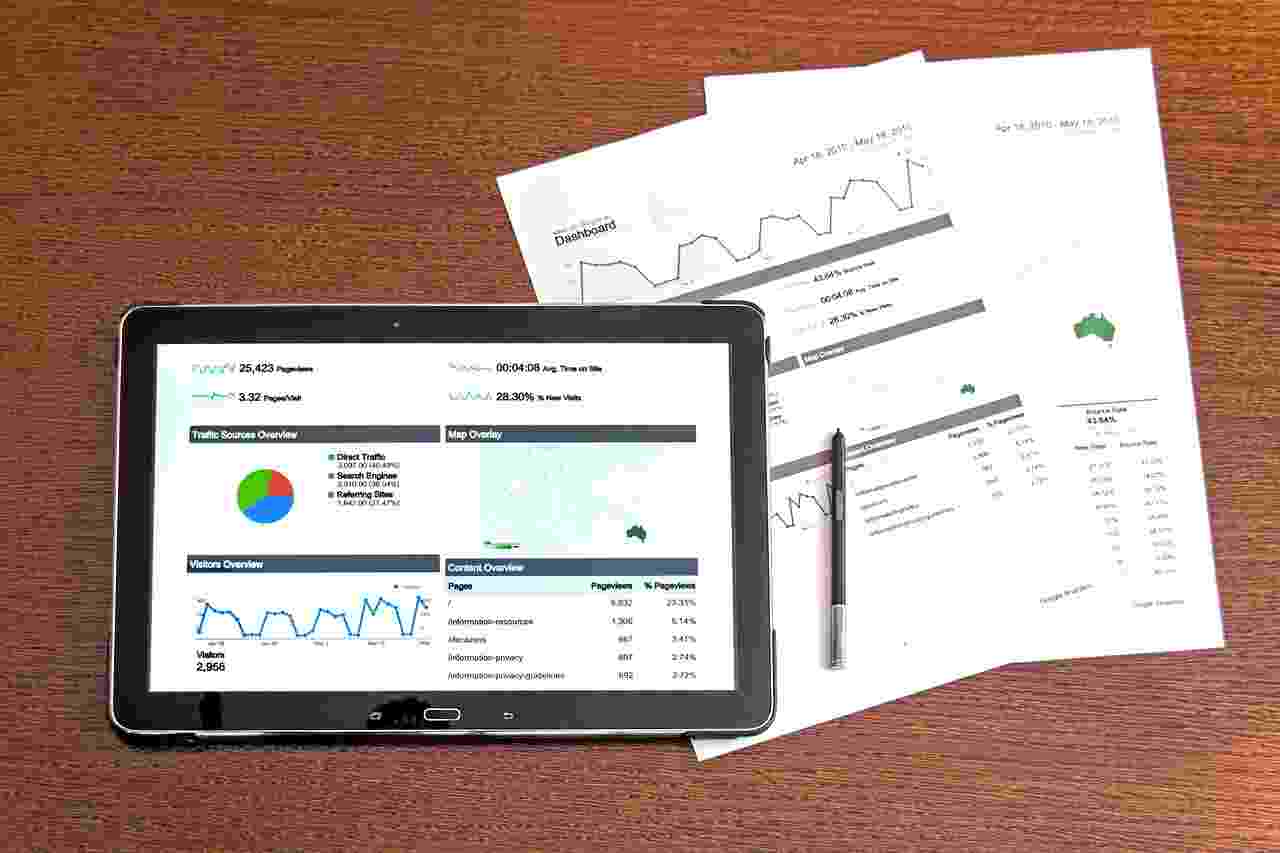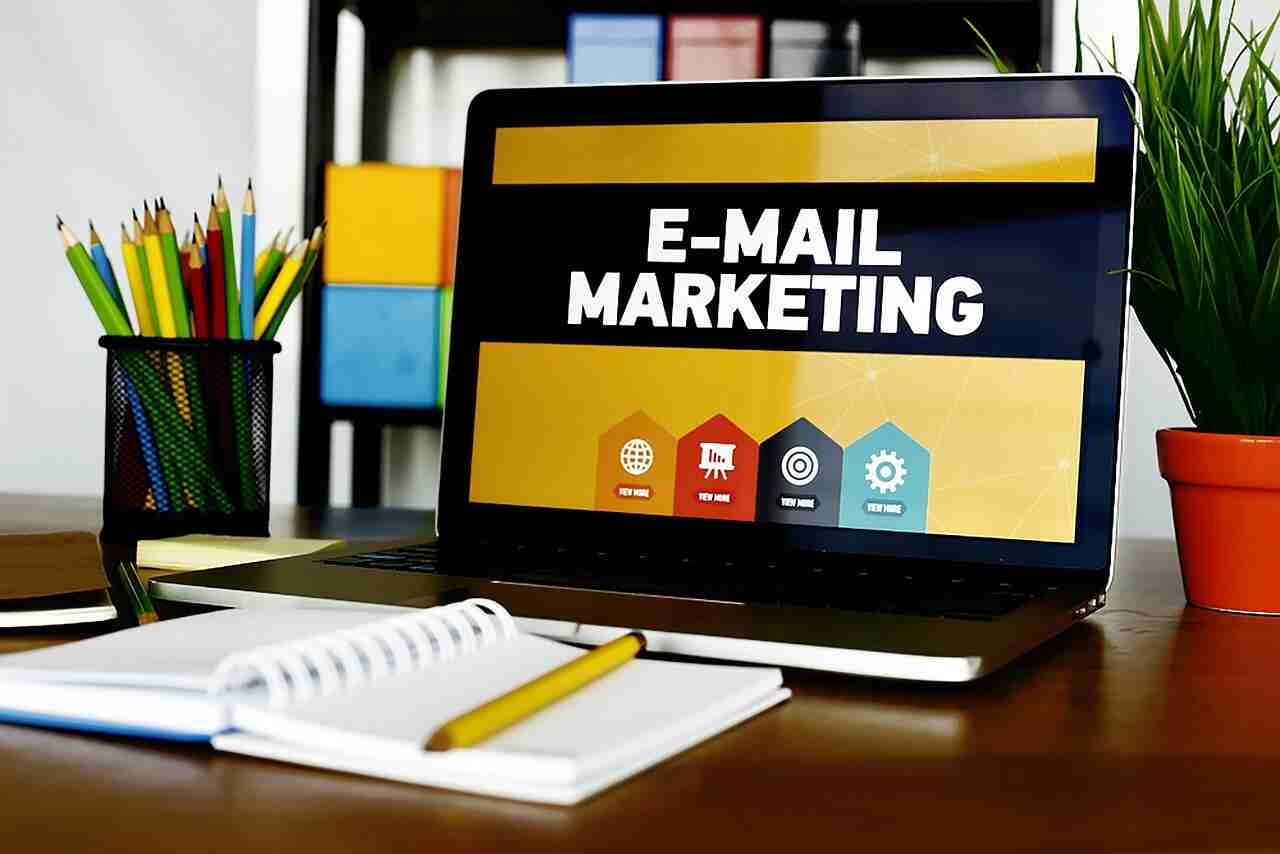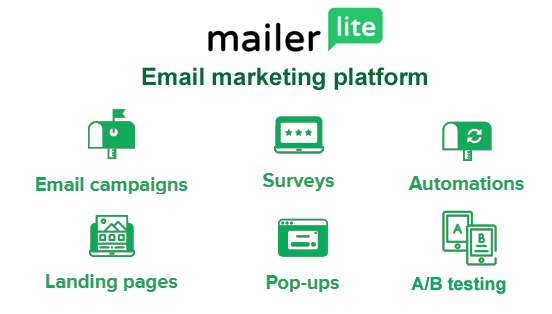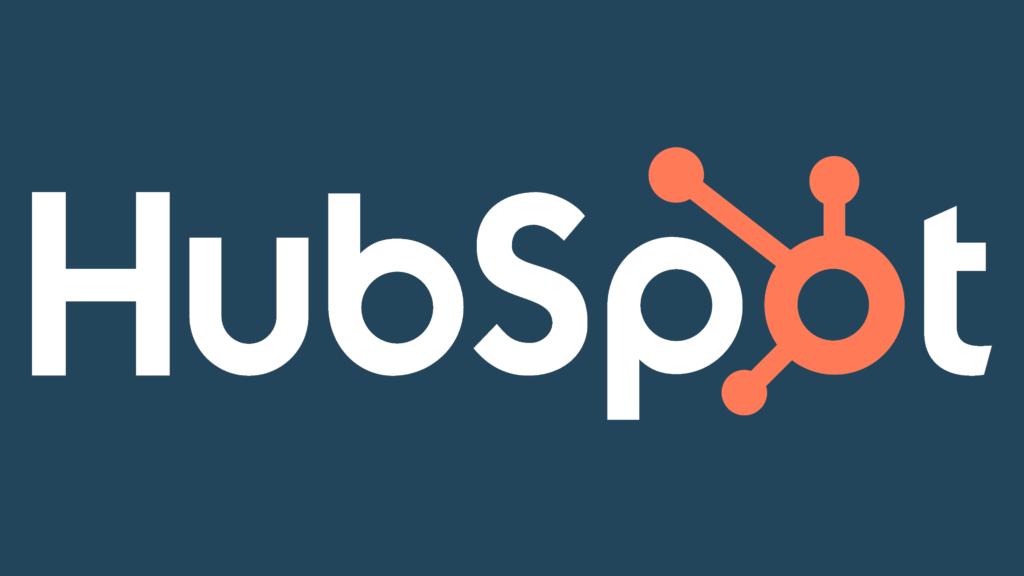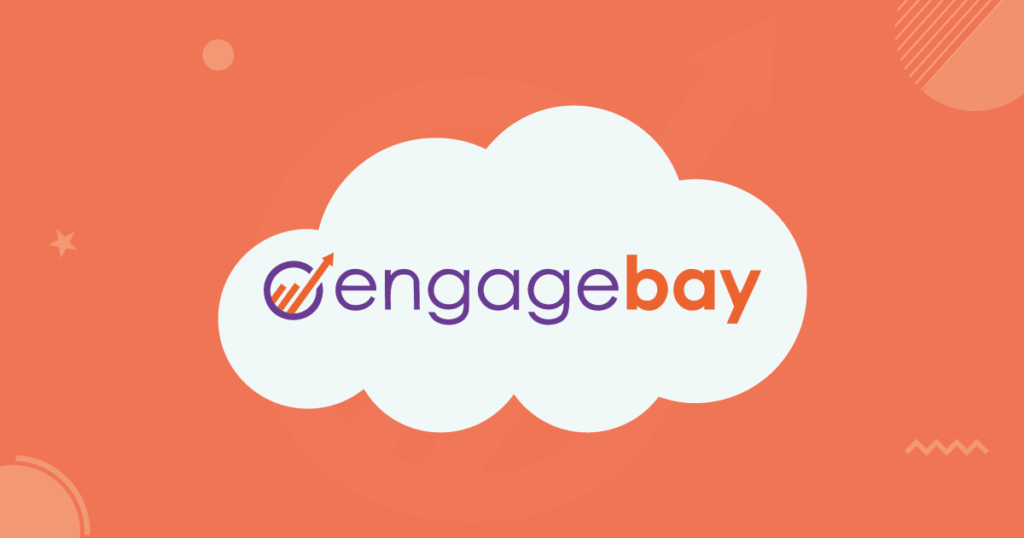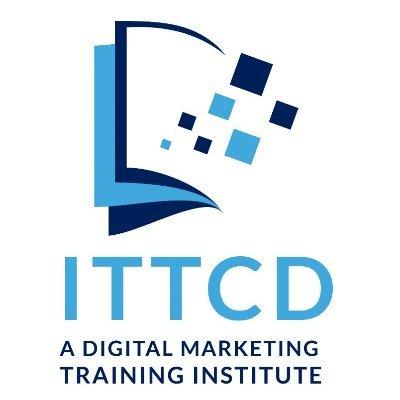Are you tired of investing time and money into your digital marketing campaigns, only to see lackluster results? It’s time to level up your game and implement Conversion Rate Optimization (CRO) strategies.
With CRO, you can transform your website from a mere online presence into a powerful sales machine.
So, if you’re ready to skyrocket your conversions and drive more revenue, then buckle up and join us on this journey to explore the world of CRO in digital marketing. Trust us, you won’t want to miss out on the potential to unlock your website’s full potential!
What is CRO?
CRO or fully named Conversion Rate Optimization is the process of improving the percentage of visitors to one’s website who complete a desired action, such as making a purchase or filling out a contact form.
CRO involves analyzing user behavior and using that data to make informed decisions about how to optimize a website’s design, content, and functionality to increase the likelihood that visitors will convert into customers. By implementing CRO strategies, businesses can improve their website’s user experience, increase customer satisfaction, and ultimately boost their conversions and revenue.
The goals of CRO

The primary goal of CRO (Conversion Rate Optimization) is to increase the conversion rate of a website, which refers to the percentage of visitors who complete a desired action, such as doing a purchase, filling out any form, or signing up for a newsletter, etc.
However, CRO also aims to improve the overall user experience of a website, making it more engaging, intuitive, and enjoyable for visitors to use. By analyzing user behavior and identifying areas for improvement, CRO can help businesses identify and fix potential barriers to conversion, such as confusing navigation, slow page load times, or unclear calls to action.
Ultimately, the goals of CRO are to drive more revenue, increase customer satisfaction and loyalty, and improve the overall performance and effectiveness of a website.
Why is CRO important for digital marketing?
CRO (Conversion Rate Optimization) is critical to the success of digital marketing campaigns because it helps businesses to increase the return on investment (ROI) of their marketing efforts. By optimizing a website’s design, content, and functionality to improve the user experience and increase conversions, businesses can generate more leads, sales, and revenue without having to increase their marketing budget.
CRO is also important because it allows businesses to gain insights into their target audience’s behavior and preferences, which can inform future marketing strategies and campaigns. By analyzing user data, businesses can identify which marketing channels and tactics are most effective at driving conversions and allocate their resources accordingly.
In addition, CRO can help businesses stay ahead of their competitors by continually improving and evolving their website’s user experience to meet the changing needs and expectations of their target audience. In today’s competitive digital landscape, a well-executed CRO strategy can make all the difference in driving growth, success, and profitability for businesses of all sizes and industries.
Benefits of CRO

There are numerous benefits to implementing a strong CRO (Conversion Rate Optimization) strategy for your website, including:
Increased conversion rates
By optimizing your website’s design, content, and functionality to improve the user experience and reduce barriers to conversion, you can increase the percentage of visitors who complete a desired action, such as making any purchase or filling out any form.
Improved user experience
CRO involves analyzing user behavior and preferences to identify areas for improvement and optimize the user experience. This can lead to increased engagement, satisfaction, and loyalty among your website’s visitors.
Higher ROI
By increasing the conversion rate of your website, you can generate more leads, sales, and revenue without having to increase your marketing budget, leading to a higher return on investment for your digital marketing campaigns.
Better insights into your target audience
CRO involves analyzing user data to gain insights into your target audience’s behavior and preferences. This can inform future marketing strategies and help you better understand and meet the needs of your customers.
Competitive advantage
By continually optimizing your website’s user experience and conversion rates, you can stay ahead of your competitors and maintain a strong position in the digital marketplace.
Overall, implementing a strong CRO strategy can lead to significant growth, success, and profitability for businesses of all sizes and industries.
The importance of user experience in CRO
User experience (UX) plays a critical role in the success of CRO (Conversion Rate Optimization). The goal of CRO is to improve the percentage of website visitors who complete a desired action, such as making a purchase or filling out a form. However, to achieve this goal, businesses must prioritize the user experience and ensure their website is intuitive, engaging, and easy to use.
A positive user experience can increase engagement, satisfaction, and loyalty among your website’s visitors, making them more likely to convert into customers. On the other side, a poor user experience by CRO may lead to frustration, confusion, and ultimately, lost conversions.
To optimize the user experience, businesses must analyze user behavior and preferences, identify areas for improvement, and make data-driven decisions about how to optimize their website’s design, content, and functionality. This may involve simplifying the navigation, improving the page load times, streamlining the checkout process, or testing different variations of calls-to-action to determine what resonates best with your target audience.
By prioritizing the user experience in your CRO strategy, you can not only increase conversions and revenue but also enhance your brand reputation and create a loyal customer base. In today’s competitive digital landscape, a strong focus on user experience is essential for businesses looking to stand out and drive long-term success.
Conducting a CRO Audit

Why an audit is necessary
A CRO (Conversion Rate Optimization) audit is a necessary step for businesses looking to optimize their website’s performance and increase conversions. Here are some reasons why a CRO audit is necessary:
A CRO audit can help businesses identify potential barriers to conversion, such as confusing navigation, slow page load times, or unclear calls-to-action. By identifying and addressing these issues, businesses can improve the user experience and increase the likelihood of visitors converting into customers.
A CRO audit involves analyzing user behavior and preferences to identify areas for improvement in the website’s design and content. This may involve simplifying the layout, improving the visual hierarchy, or optimizing the copy to better resonate with your target audience.
A CRO audit can help businesses test and refine different CRO strategies to determine what works best for their website and target audience. This may involve A/B testing different variations of calls-to-action, testing different landing page designs, or experimenting with different pricing strategies.
In today’s competitive digital landscape, businesses must continually optimize their website’s performance to stay ahead of their competitors. A CRO audit can help businesses identify areas for improvement and implement strategies that can lead to increased conversions, higher ROI, and a stronger competitive advantage.
In summary, a CRO audit is necessary to identify potential barriers to conversion, optimize website design and content, test and refine CRO strategies, and stay ahead of competitors. By prioritizing CRO and conducting regular audits, businesses can improve their website’s performance, increase conversions, and achieve long-term success.
The steps involved in a CRO audit
A CRO (Conversion Rate Optimization) audit is a process of analyzing and evaluating a website’s performance to identify areas for improvement and optimize its conversion rate. The steps involved in a CRO audit include defining goals, analyzing user behavior, evaluating website design and content, identifying potential barriers to conversion, developing optimization strategies, implementing changes, and measuring results. By following these steps, businesses can improve their website’s performance, increase conversions, and achieve long-term success. A CRO audit is a necessary step for businesses looking to optimize their website’s performance and increase conversions.
Tools to use for a CRO audit

There are several tools available that businesses can use to conduct a CRO (Conversion Rate Optimization) audit of their website. Here are some commonly used tools:
Google Analytics
Google Analytics is a free web analytics tool that can help businesses track user behavior on their website, including traffic sources, user demographics, and behavior flow.
Hotjar
Hotjar is a user behavior analytics and feedback tool that can help businesses understand how visitors are interacting with their website, including heatmaps, visitor recordings, and surveys.
Crazy Egg
Crazy Egg is a website optimization tool that provides heatmaps, scroll maps, and click reports to help businesses identify potential areas for improvement.
Optimizely
Optimizely is an A/B testing and experimentation tool that can help businesses test and optimize different variations of their website to improve conversion rates.
SEMrush
SEMrush is an all-in-one digital marketing tool that can help businesses conduct a CRO audit by providing insights into website traffic, keyword rankings, and competitor analysis.
VWO
VWO is a conversion optimization platform that provides A/B testing, heatmap analysis, and visitor recordings to help businesses optimize their website and increase conversions.
Analyzing Data and Metrics
Importance of data and metrics in CRO
Data and metrics play a crucial role in the CRO (Conversion Rate Optimization) process. By analyzing and interpreting data, businesses can gain insights into user behavior, identify potential areas for improvement, and develop optimization strategies that improve their website’s performance and increase conversions.
Metrics such as bounce rate, time on page, and conversion rate can provide businesses with valuable insights into how users interact with their website. For example, a high bounce rate may indicate that users are not finding the content they are looking for, while a low conversion rate may suggest that there are barriers preventing users from completing desired actions.
Types of data to analyze
In order to conduct a comprehensive CRO (Conversion Rate Optimization) analysis, it is important to analyze various types of data. Here are some of the key types of data that businesses should consider analyzing:
Website traffic
Businesses should analyze website traffic data to understand how users are arriving at their website, what pages they are visiting, and how long they are staying on the website.
User behavior
Tools like Google Analytics and Hotjar can provide businesses with insights into user behavior, including bounce rate, time on page, and scroll depth.
Conversion rate
Conversion rate data can help businesses understand how many users are completing desired actions on their website, such as making a purchase or filling out a form.
A/B testing results
By conducting A/B tests, businesses can compare the performance of different variations of their website and identify which changes are leading to improved conversion rates.
Customer feedback
Feedback from customers can provide valuable insights into areas for improvement and potential barriers to conversion.
Competitor analysis
Analyzing the websites of competitors can help businesses identify best practices and potential areas for improvement.
Creating and Testing a CRO Strategy

Importance of a CRO Strategy:
A CRO (Conversion Rate Optimization) strategy is crucial for businesses looking to improve website performance and increase conversions. By developing a strategy that includes testing, optimization, and analysis, businesses can make data-driven decisions and continuously improve website performance.
Elements of a CRO Strategy:
Define goals
The first step in developing a CRO strategy is to define the goals of the optimization efforts. This could be to increase conversions, reduce bounce rate, or improve user engagement.
Identify target audience
Businesses should identify their target audience and understand their behavior and preferences to develop optimization strategies that resonate with them.
Conduct an audit
A thorough CRO audit will help identify areas for improvement on the website, including design, content, and functionality.
Develop hypotheses
Based on the findings from the audit, businesses should develop hypotheses to test and improve website performance.
Conduct A/B tests
A/B testing is a key component of a CRO strategy, allowing businesses to compare different versions of their website and identify the most effective design and content.
Analyze results
Businesses should regularly analyze data and metrics to understand the performance of their website and the impact of their optimization efforts. This will help inform future optimization strategies and ensure continuous improvement.
Testing Tools and Methods:
There are several testing tools and methods that businesses can use as part of their CRO strategy, including:
A/B testing
This involves testing two versions of a webpage to see which one performs better in terms of conversion rates.
Multivariate testing
This involves testing multiple variations of a webpage at the same time to determine the most effective combination of design and content elements.
Heatmapping
This involves using a tool to track where users click and move their mouse on a webpage, providing insights into user behavior.
User surveys
This involves collecting feedback from users to understand their needs, preferences, and pain points.
Best Practices for Testing:
To ensure accurate and effective testing, businesses should follow these best practices:
Test one variable at a time
This will help isolate the impact of each variable and ensure accurate results.
Use a large sample size
This will ensure that the results are statistically significant and representative of the target audience.
Test for a sufficient period
Testing should be conducted for a long enough period to gather enough data and ensure that the results are reliable.
Use clear and concise hypotheses
The hypotheses should be clear and concise, making it easy to understand what is being tested and why.
By following these best practices, businesses can ensure that their testing is accurate and effective, leading to more successful optimization efforts and increased conversions.
Common CRO Mistakes to Avoid

Conversion Rate Optimization (CRO) is a critical part of digital marketing, and making mistakes during the process can hinder its effectiveness. Following are some major CRO mistakes to avoid:
Not defining clear goals
Without clear goals, it’s challenging to measure the success of CRO efforts. Setting specific goals will help businesses understand the areas that require optimization and track the effectiveness of the strategies.
Overreliance on testing tools
While testing tools are crucial for CRO, they should not be the only source of information. Overreliance on these tools can lead to missing essential insights that could have been uncovered through user research.
Not analyzing data correctly
Collecting data is only useful if it’s analyzed correctly. Businesses should ensure that they have the skills and knowledge to interpret data accurately and identify actionable insights.
Ignoring the user experience
Focusing solely on increasing conversions can lead to a poor user experience. Businesses should strive to balance optimization efforts with a positive user experience.
Lack of testing prioritization
Testing should be prioritized based on the potential impact on the business. Failure to prioritize testing can lead to wasted resources and time.
Not testing mobile optimization
With the increasing use of mobile devices, optimizing for mobile is essential. Businesses should ensure that their testing includes mobile optimization.
By avoiding these common CRO mistakes, businesses can ensure that their optimization efforts are effective and lead to improved website performance and increased conversions.
The Role of A/B Testing in CRO
A/B testing is a critical component of Conversion Rate Optimization (CRO) and involves comparing two versions of a webpage to determine which one performs better in terms of achieving a specific goal.
Here are some reasons why A/B testing is essential in CRO:
Identifying the best-performing version
A/B testing helps identify which version of a webpage is more effective at converting users, leading to increased conversions and better website performance.
Improving user experience
By testing different versions of a webpage, businesses can identify elements that improve the user experience and remove those that don’t, leading to a better user experience overall.
Data-driven decision making
A/B testing provides data-driven insights that businesses can use to make informed decisions about their optimization efforts. By analyzing the results of A/B testing, businesses can identify areas that require improvement and optimize their website accordingly.
Testing hypotheses
A/B testing helps businesses test specific hypotheses about the impact of different design and content elements on user behavior. This helps businesses understand what works best for their target audience and optimize their website accordingly.
Continuous optimization
A/B testing is an ongoing process that businesses can use to continuously improve their website performance. By testing different versions of a webpage and analyzing the results, businesses can identify areas that require optimization and make changes accordingly.
The Impact of CRO on SEO
Conversion Rate Optimization (CRO) and Search Engine Optimization (SEO) are two major aspects of digital marketing. While they may appear to be separate, they have a significant impact on each other.
Here are some ways CRO can impact SEO:
Improved User Experience
A well-optimized website that provides a positive user experience is likely to keep visitors on the site for longer periods. This can lead to a lower bounce rate, increased time spent on the site, and improved engagement metrics. Search engines, such as Google, consider user experience as a ranking factor, so a positive user experience can help improve SEO.
Higher Quality Traffic
CRO can help businesses attract higher quality traffic to their website. By optimizing their website for conversions, businesses can ensure that the traffic they receive is relevant and more likely to convert. This can lead to a higher conversion rate, improved engagement metrics, and improved SEO.
Improved Page Speed
CRO involves optimizing the website for speed, which can have a positive impact on SEO. Page speed is a ranking factor, and a faster website can improve rankings and attract more visitors to the site.
Reduced Bounce Rate
CRO can help reduce the bounce rate, which is the percentage of visitors who leave the website after viewing only one page. A high bounce rate can negatively impact SEO, as it signals to search engines that the content on the site is not relevant to users.
Increased Conversions
A well-executed CRO strategy can increase conversions, which is the ultimate goal of any digital marketing campaign. Increased conversions can lead to more revenue and a higher return on investment, which can lead to increased investment in SEO.
The Future of CRO

The future of Conversion Rate Optimization (CRO) looks promising, as businesses continue to recognize the importance of optimizing their website for conversions.
Here are some trends that are shaping the future of CRO:
Personalization
As more data becomes available, businesses can use it to create personalized experiences for their customers. Personalization involves tailoring the website content, offers, and messaging to meet the specific needs and preferences of each customer. Personalization may lead to higher engagement, increased conversions, and improved customer satisfaction.
Artificial Intelligence (AI)
AI can help businesses analyze vast amounts of data quickly and accurately, enabling them to identify patterns, predict behavior, and optimize their website for conversions. AI can also be used to create personalized experiences, automate testing, and improve the customer journey.
Multichannel Optimization
With the rise of omnichannel marketing, businesses need to optimize their website for multiple channels, including mobile, social media, and email. This involves creating consistent experiences across all channels, and using data to identify the channels that are most effective for driving conversions.
Voice Search Optimization
As more consumers use voice search to find products and services, businesses need to optimize their website for voice search. This involves using natural language keywords, optimizing content for featured snippets, and ensuring that the website is mobile-friendly.
Emphasis on Metrics
As businesses become more data-driven, they will continue to emphasize metrics such as conversion rate, bounce rate, and engagement rate. This will require businesses to invest in tools and technologies that enable them to track and analyze these metrics accurately.
Conclusion
Conversion Rate Optimization (CRO) is one of the crucial parts of any digital marketing strategy. By identifying and fixing issues that prevent website visitors from converting, businesses can improve their website’s performance and achieve their desired business goals. Through a CRO audit, businesses can identify areas for improvement, develop a CRO strategy, and use A/B testing to determine the most effective changes.
It’s also important to use data and metrics to track progress and adjust the strategy accordingly. With the future of CRO looking promising, businesses that prioritize CRO will have a competitive advantage and be able to deliver better experiences for their customers while achieving their desired business outcomes. By implementing CRO, businesses can boost their conversions, improve customer satisfaction, and ultimately drive business growth.
You may also like to read
Using Marketing Analytics to Drive Your Digital Marketing Strategy

















